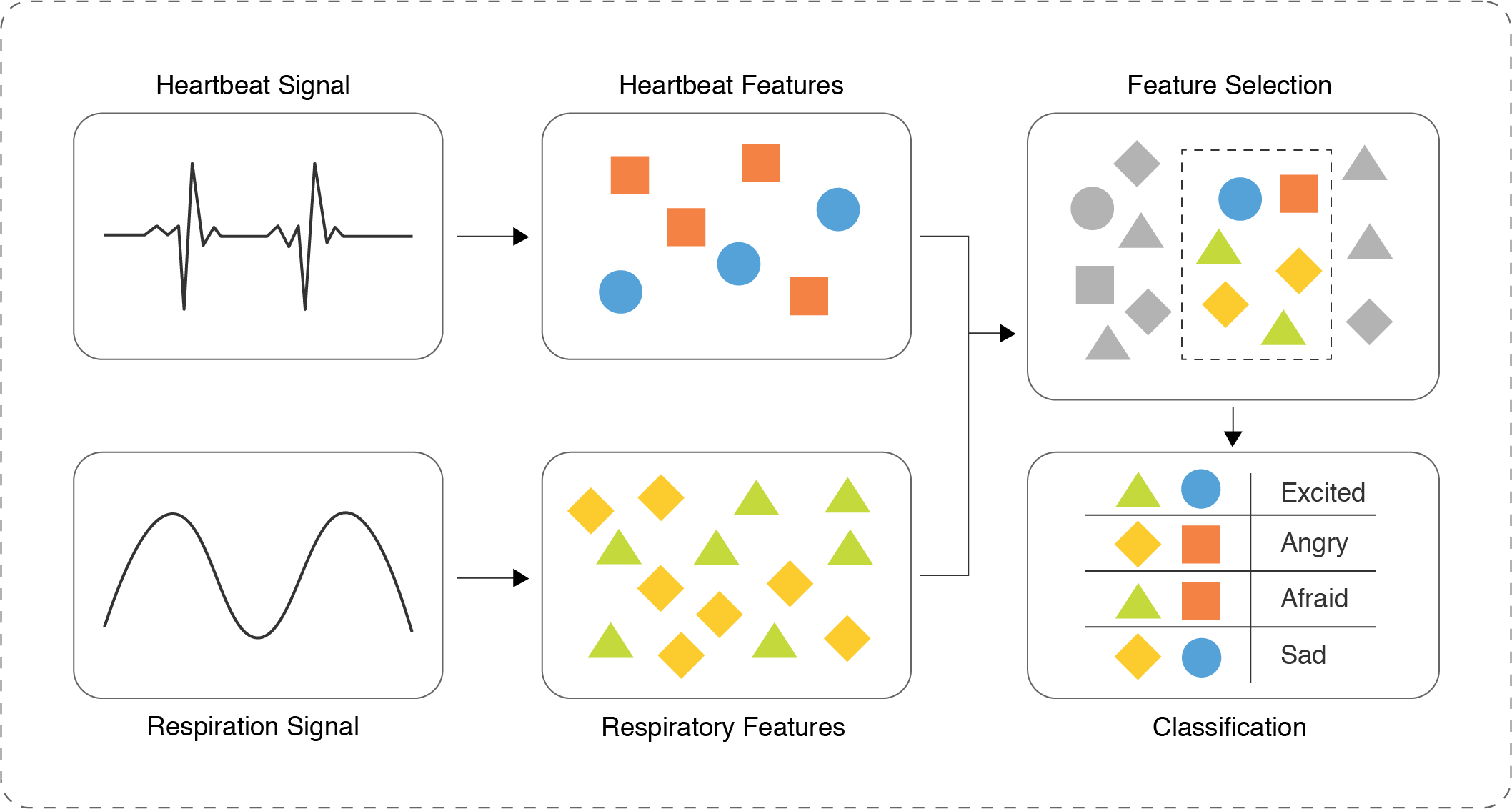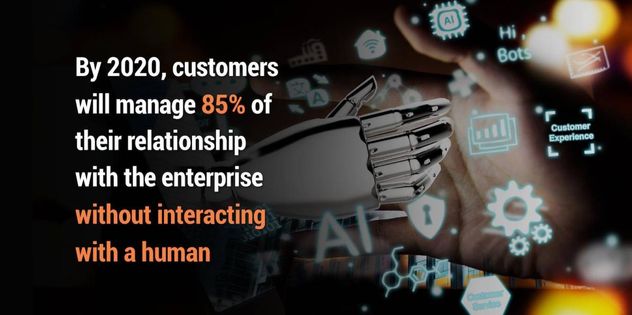
The more enriched an experience, the more dopamine is released into our brain and more profound is the interactivity associated with it. The feel-good factor or the user experience (UX) of any product, platform or service is the quintessential key to deliver a prolonged and definitive image of the brand in the mind of the customer. But how we create that indelible mark in the user’s mind or what technological advancements will lead to enhance the effect, undoubtedly needs our attention as we progress towards the UX of tomorrow. Can artificial intelligence lead Chatbots distinctly be the buddies in changing the future of UX?
Let me first take you through what is at the heart of past and present UX paradigms, what has made the UX of yesterday and today successful, and what technologies have been employed in realizing it.
Cave drawings, tapestries and even written manuscripts provided a UX, wherein storytellers, oracles and poets would “hard-code” their messages. These technologies were to take a life of their own through the ages, with abstract content engaging its audience’s imagination through reflection and thought. Whether sculpted, drawn or written, its purpose was to convey an intended natural meaning, even when done so artificially in hindsight.

Progressive Advancement in UX
With the advent of modern computing in the 20th century, engineers attempted to “hard-code” computers to interact with users. It was limited and primitive by today’s standards, but it was something new! Even when projecting into a fictional future, HAL 9000 from Space Odyssey, the original Robocop, and Star Trek’s LCARS voice interface were deliberately designed to sound and feel mechanized. They meant to convey a sense of artificiality to the viewers of the 60’s through 90’s, and for a good reason. Human-machine interface grabbed attention of that era’s audience simply by the virtue of novelty; it needed to be dichotomized from human-human interaction.
However, with the changing times, it is not the same today where the term “AI” is taken for granted. We have moved along in our expectations of what AI should be capable of. Today’s chatbots and Interactive Voice Response (IVR) systems – therefore – are not meant to sound or feel mechanized and boring. They actively engage users by sounding more “human.” And it will be far more interesting in the immediate future. That will be the time of ontology in its truest form, where intelligent systems will actively drive the user, and not the other way around!
We are soon entering the age of evolved chatbot customer experience that will concurrently span a multitude of modalities – not (just) text. It will rely on voice interaction, mixed-reality graphics, gestures, and cybernetic interfaces, all topped by AI concurrently performing linguistic and behavioural analyses. Undoubtedly it would be a truly enriched and immersive user experience that will know how to grab the user’s attention at will.

A Time of Multimode User Interaction
Now that we are steadily stepping onto the time of ontology, with intelligent systems driving the user to take his/her decisions, it’s time to audit and learn how certain existing content presentation techniques, UI designs, and UX methods might stand the test of time. And the role advancements in Artificial Intelligence (AI) and Augmented/Mixed Reality (AR/MR) will play in harnessing their true potential.
Human language, when textualized, is just one mode of communication. Advances in Natural Language Processing (NLP) have made great strides within this modality. Supervised machine learning techniques, such as Support Vector Machines (SVMs) can now extract relevant information from text if trained to do so for a given set of contexts (domains.)
By introducing Neural Networks and Deep Learning techniques, NLP systems can even be made to classify the intent more holistically – and in a limited fashion can readily uncover the underlying sentiment behind the textualized content as well.

Body language, tone of voice and selective vocal emphasis are still additional modes of communication that needs consideration. These added modalities can provide far greater cues into the intent and meaning behind linguistic expression. Recently, two teams from Nanyang Technological University of Singapore, Carnegie Mellon University in the USA, and Instituto Politecnico Nacional de Mexico have independently published research papers validating the methods and practical efficacy of Multimodal Sentiment Analysis (MSA) by adding information from video and audio content along with established NLP techniques. And it is the author’s opinion that MSA will gain considerable traction in terms of the practical application of NLP in chatbots.

Furthermore, incorporating physiological biometrics to this analysis (e.g. either non-intrusively or using wearables) can make machine learning systems even more effective and efficient. For instance, adding heart rate, voice fluctuations, and posture can provide substantial information about the user’s intent. Adding these subtle modalities can propel an interactive AI much closer to realizing true ontology; to not just do what the user seemingly asked for, but what the user may actually have wanted or needed.

An Era of On-Demand Mixed Reality
Even in current times, people tend to own more than one device and can switch between them part-way through their task. Studies have shown that up to quarter of users can switch to a tablet from their smartphone and more than half switch to a laptop midway through any given activity. With the advent of new and more creative tools, it is only reasonable to expect that omnichannel UX will require absolute consistency in the age of multi-device use-cases.
UX therefore will not be limited to a simple “flat 2D screen” interaction but rather involve AR/MR as is the case with devices such as Microsoft’s Hololens. AR/MR computing platforms will need to include any given device they identify, and interoperate with it at run time. Therefore, such platforms will have the capability to recognize and connect to environmental sensors when entering a room, or identify and interact at run time with smart outdoor cameras for enhancing the user’s perceptual UX. Individual applications will not need to re-implement any lower-level interfaces and would bring in a fine seamless interaction for the user.

However, simply immersing a user into graphically rich, and detailed contextual content may not be enough to keep them engaged in the long haul. Can you quickly recall the mechanized voices of fictional AI’s of the 60’s-90’s? Agreed, they sound boring by today’s standards – but were novel and “hip” during their respective eras. The same may be the eventual aftermath of AR or MR once the “novelty honeymoon” is over. To ensure that the users truly benefit and remain engaged, humanizing the digital experience will be as necessary tomorrow as it is today for UX and UI, and more.
Humankind’s initial experimentation with the art of myth and storytelling, though synthetic, is in fact the oldest known technique to share experiences through analogy. It is this technique, that remains at the heart of humanizing the digital UX. With the abundance of content existing on the web, being different will continue to be critical. Creating a story around a given product and inviting users to become a part of it might be the easiest way to engage them. Perhaps, in the era of MR/AR, such storytelling will be of vital importance to let the user immerse into the experience – thereby staying engaged throughout the UX.
Conversational interfaces may also prove invaluable in engaging the user to intuitively access content and assist in decision making. Currently, such interfaces, or UI – though effective – are limited to text- or voice-based chatbots. However, conversational interaction for AR or MR will be fundamentally different due to the enriched content rendered within an arbitrary 3D space. Free from the confines of a 2D “flatland,” UX of the future will demand digital content to be more than what is currently accessed over the web. UX designers and engineers alike will need to prepare AI for verbal, as well as cues to interact with the users via augmented reality or mixed reality; not just by displaying audible or visual content, but by introducing key micro-interactions through evolutionary storyboarding that trigger the user’s active thought process.

Combining conversational paradigms and on-demand storytelling to create engaging UX will require an abundance of information processing power and storage capacity, whether onboard an AR/MR device, or distributed across a network of devices and appliances. And certainly, it will require substantial content generated at run-time in addition to existing pre-processed and raw data. The key demand for businesses and social networks of the future will be in how to restructure and optimize their content and UI experiences so that it is served readily through AR/MR interfaces. It will not just be flat UI, image and text on a website; but disparate content and metadata that can be rendered on-demand in the form of virtual objects within an augmented voxel space as part of a storytelling experience through AR or MR.

Artificial Intelligence Personified
Let’s take a closer look at how content and data served through various AI led technologies will change the perspective of UX designers, budding technology entrepreneurs as well as mature technology professionals’ understanding of the UX and its future. We have already witnessed the explosion of chatbots and smart machines within the market due to their versatile applicability in implementing conversational AI. App fatigue may further fuel the growth of chatbot assistants – so as to delegate sifting through apps and content based on their utility for a user’s specific personality, needs, and habits. Additional drivers in favour of chatbots are top brands who are directly integrating them into their customer experience channels starting from direct marketing through customer service and support, to direct sales – thereby increasing efficiency.
Business and social websites too publish their Frequently Asked Questions (FAQs) collectively. Yet they also include chatbots to fetch the underlying content from a single source on demand structured data repository within a Content Management System (CMS). However, such hard-coded content may not necessarily connect with users in a way that a natural dialogue would. In an age, where we are rapidly advancing towards conversational commerce, businesses and individuals alike will need to ensure that they are ahead of the game in capturing their audience. This can only be achieved if they can repurpose abstract information to generate responses from raw data – not such that AI chatbots create their own language – but that they are capable of dialogue with their audience to connect at a personal level.

However, such chatbots – might always be tainted with the perception of bias towards the business they are designed to generate. Instead of succumbing to the business of bots, users of tomorrow will demand independent aggregator assistant bots not linked to a single platform, but capable of automatically analyzing the user’s needs, all available products and services, their price and value, and act as an advisory assistant without vendor bias. Development and productizing of such “untethered” buddy chatbots are the next big opportunity for the start-ups and businesses of today.
Enhancement of the resulting UX can be exponential if additional modalities are included within the user interaction. Consider that upcoming trends for UX point to the proliferation of AR/MR in the immediate future.

Putting it all Together
In the pursuit of advancement, we forget sometimes what really drives the technological continuum. As social beings, we do not really embrace technology for technology’s sake. We do so to enrich our interactivity and enhance our experiences. It is no secret therefore, that the more targeted and emotionally uplifting the UX and UI, the more rewarding is its perception by the human brain. Only then is it able to capture a user’s attention and imagination – irrespective of technology used to create that UX or UI design.
In the coming years, it will become even more important for product and UX or UI designers to include the “human” element. In the next few years, conversations are the next layer of UX and user interaction. Chatbots in their current state might not be able to handle the required complexities arising from the expectations of today’s users. Advances in machine learning have certainly improved the adaptability of current chatbots in the UX. But the art of storytelling dependent heavily on contextual nuances and creativity are still very much beyond the scope of current technology. In the age of conversational commerce, it will become crucial to consider the dynamics of natural conversational dialogue, and impartiality of presented information to truly capture the attention of the user.

The future of UX will indeed be extremely interesting for those of us who witness it in full swing. With a rich plethora of immersive content, interactive UI designs, and customized experiences available on-demand and with additional advances in human-machine interfaces to directly link the human brain to information access peripherals, such interactions can eventually become part of the user’s active thought process. But until a time, humans practically become cyborgs, “un-tethered” buddy chatbots rendered as human-like guides within AR/MR environments may act as the user’s “inner voice” so as to assist in decision-making – via conversational discourse as well as through micro interactions in the UX journey. Perhaps taking the form of the user’s own “mirror image” to look and sound familiar, or that of the user’s idol so as to be more convincing, such personifications of AI, with help from augmented reality or mixed reality, may be key to the UX of tomorrow.



